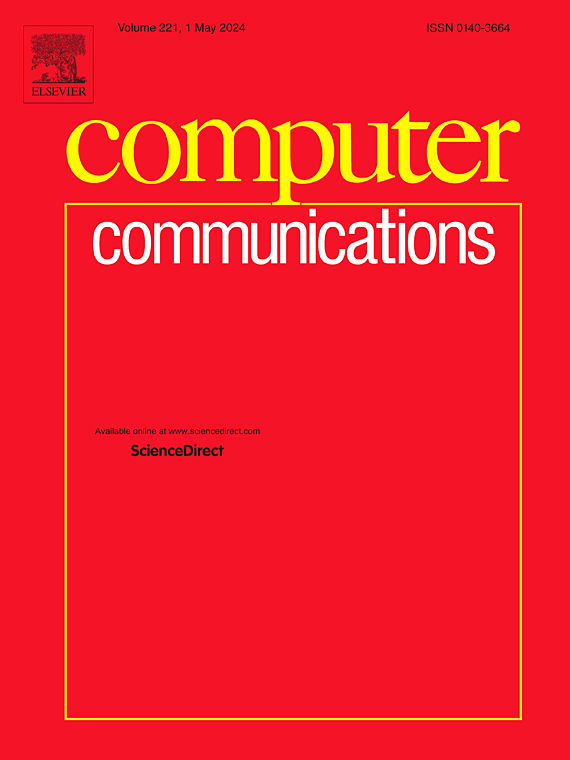通过在匿名网络中隐藏其角色来保护实体
IF 4.5
3区 计算机科学
Q1 COMPUTER SCIENCE, INFORMATION SYSTEMS
引用次数: 0
摘要
了解实体在网络中的角色会破坏匿名性,并有助于识别其行为模式。在许多现有的低延迟匿名网络结构中,数据包传输隧道的创建和使用允许对手识别实体的角色。本文探讨了识别这些隧道的影响,特别是这种识别如何暴露实体在特定信息中的角色,从而可能降低网络的匿名水平。为了探讨这个问题,我们首先讨论了匿名网络的两个关键方面:信息的分布和角色的同质性。然后,我们分析了几种低延迟匿名结构,以评估与隧道识别相关的漏洞,并根据上述方面评估它们的优缺点。此外,我们还提出了一种新型网络结构,通过取消传统的隧道机制(通常需要隧道建立信息)来解决这些漏洞。这一改变可防止对手识别实体的角色。在建议的结构中,发送方和中间中继共同为每个数据包选择不同的路由,从而消除了发送方建立专用数据隧道的需要。为了提供更深入的分析,我们将详细描述攻击者可以通过跟踪隧道信息获得的信息,以及这如何通过暴露实体的角色来破坏匿名性。我们还将评估这些变化如何影响基于攻击者知识的匿名程度。我们的评估结果表明,所提出的技术有效地消除了通常会暴露实体角色的流量模式,从而抵消了攻击者破坏匿名性的能力。因此,与以前的结构相比,匿名性的平均水平有了显著提高。总之,我们的研究结果表明,与以前的方法相比,建议的方法提供了一种更有效的隐藏实体角色的策略。本文章由计算机程序翻译,如有差异,请以英文原文为准。
Protecting an entity by hiding its role in anonymity networks
Knowing the role of entities in a network undermines anonymity and facilitates the identification of their behavioral patterns. In many existing low-latency anonymity network structures, the creation and use of tunnels for packet transmission allow adversaries to discern the roles of entities. This paper explores the impact of identifying these tunnels, specifically how such identification can expose an entity’s role in relation to a particular message, potentially reducing the level of anonymity in the network. To explore this, we first discuss two key aspects of anonymity networks: the distribution of information and the homogeneity of roles. We then analyze several low-latency anonymity structures to assess vulnerabilities related to tunnel identification, evaluating their strengths and weaknesses based on the aforementioned aspects. In addition, we propose a novel network structure that addresses these vulnerabilities by eliminating the conventional tunnel mechanism, which typically requires a tunnel establishment message. This change prevents adversaries from identifying an entity’s role. In the proposed structure, the sender and intermediate relays work together to select distinct routes for each packet, removing the need for the sender to establish a dedicated data tunnel. To provide a deeper analysis, we will describe in detail the information an attacker can obtain by tracing tunneling messages and how this compromises anonymity by exposing the roles of entities. We will also evaluate how these changes affect the degree of anonymity based on the attacker’s knowledge. Our evaluation shows that the proposed technique effectively eliminates traffic patterns that would normally reveal the roles of entities, thus neutralizing the attacker’s ability to compromise anonymity. As a result, the average level of anonymity is significantly improved compared to previous structures. Overall, our findings suggest that the proposed approach offers a more effective strategy for concealing the roles of entities compared to earlier methods.
求助全文
通过发布文献求助,成功后即可免费获取论文全文。
去求助
来源期刊

Computer Communications
工程技术-电信学
CiteScore
14.10
自引率
5.00%
发文量
397
审稿时长
66 days
期刊介绍:
Computer and Communications networks are key infrastructures of the information society with high socio-economic value as they contribute to the correct operations of many critical services (from healthcare to finance and transportation). Internet is the core of today''s computer-communication infrastructures. This has transformed the Internet, from a robust network for data transfer between computers, to a global, content-rich, communication and information system where contents are increasingly generated by the users, and distributed according to human social relations. Next-generation network technologies, architectures and protocols are therefore required to overcome the limitations of the legacy Internet and add new capabilities and services. The future Internet should be ubiquitous, secure, resilient, and closer to human communication paradigms.
Computer Communications is a peer-reviewed international journal that publishes high-quality scientific articles (both theory and practice) and survey papers covering all aspects of future computer communication networks (on all layers, except the physical layer), with a special attention to the evolution of the Internet architecture, protocols, services, and applications.
 求助内容:
求助内容: 应助结果提醒方式:
应助结果提醒方式:


